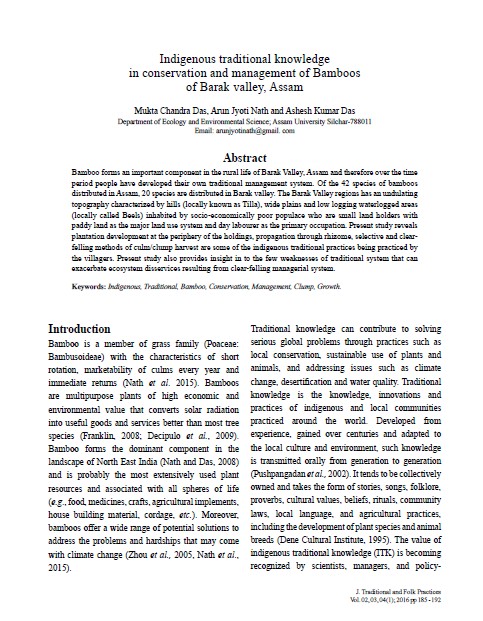Indigenous traditional knowledge in conservation and management of Bamboos of Barak valley, Assam
Keywords:
Indigenous, Traditional, Bamboo, Conservation, Management, Clump, GrowthAbstract
Bamboo forms an important component in the rural life of Barak Valley, Assam and therefore over the time
period people have developed their own traditional management system. Of the 42 species of bamboos
distributed in Assam, 20 species are distributed in Barak valley. The Barak Valley regions has an undulating
topography characterized by hills (locally known as Tilla), wide plains and low logging waterlogged areas
(locally called Beels) inhabited by socio-economically poor populace who are small land holders with
paddy land as the major land use system and day labourer as the primary occupation. Present study reveals
plantation development at the periphery of the holdings, propagation through rhizome, selective and clearfelling
methods of culm/clump harvest are some of the indigenous traditional practices being practiced by
the villagers. Present study also provides insight in to the few weaknesses of traditional system that can
exacerbate ecosystem disservices resulting from clear-felling managerial system.


